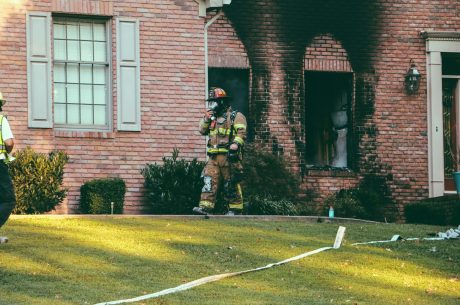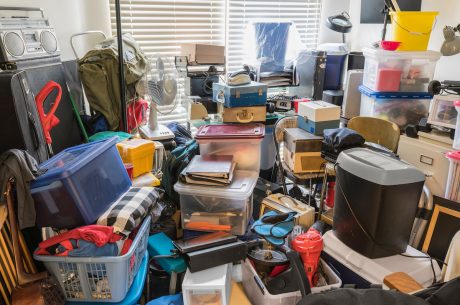When a fire strikes your home, the damage often goes beyond just what you can see. Between the smoke, soot, and hidden structural wear, it can feel overwhelming trying to make sense of what needs to be done next. This is where a full fire damage assessment comes in. It’s the first step toward figuring out how bad the damage is, what needs repair, and how to make your home safe again. Without a thorough check, it’s hard to know what problems may still be lingering behind the walls or under the surface.
If you’re in Naples, Florida, where summer lightning storms and the hot climate bring added fire risks, understanding how fire damage is assessed can give you some peace of mind. It’s not just about spotting the obvious, it’s about uncovering what the fire may have weakened or left behind. Whether you’re dealing with smoke odor, burned wiring, or water damage from putting out the flames, professional assessment makes sure nothing gets missed.
Initial Safety Inspection
Before anyone starts cleaning or restoring the property after a fire, the structure needs to be checked for safety. This step is always first for a reason. Fire can change the way a home holds together. Heat weakens support beams. Smoke can damage wiring. And water from firefighting can make floors and ceilings sag or warp. A house might look okay on the outside but still have unsafe spots that could put people in danger.
During this inspection, fire damage crews examine how the fire spread and what parts of the structure took the most heat. In a Florida home, you might see problems with roof trusses, insulation materials, and tile or wood floors, especially after water seeps into places it shouldn’t. Inspectors will usually check:
– Whether the roof or ceilings are stable
– If electricity and gas lines are safe to use
– Whether floors or walls show signs of collapsing or buckling
– If there’s glass, sharp debris, or toxic residue left behind
This first round of checking helps make sure both the crew and the homeowner can re-enter without extra risk. Skipping this part could mean stepping into a building with hidden hazards, like soft flooring or damaged wires that could spark again. That’s why this safety check is part of day one on any fire cleanup job.
Damage Documentation
After the property is cleared for safe entry, the next step is taking record of the actual damage. This may not sound exciting, but it’s one of the most helpful parts of the whole process. Thorough documentation helps track what got damaged, what can be repaired, and what needs to be replaced. It’s also a major part of handling insurance claims later on.
Crews usually start by walking through the structure and taking photos of affected rooms. They’ll take close-up shots of damage to walls, furniture, appliances, and floor coverings. In many cases, they may use moisture meters, thermal cameras, or other tools to get a better view of what’s behind the surface. Video is also used to capture a walkthrough, especially when smoke or water damage stretches across several rooms.
Along with visuals, teams will write detailed notes describing what they see. This includes things like:
– Soot and smoke buildup on walls and ceilings
– Warped flooring or peeling paint
– Signs of mold starting from water left behind
– Burned items like cabinets, doors, or windows
In Naples, where the humidity can make things worse after a fire, catching early signs of moisture damage is key. Every photo and note becomes part of a file that keeps the cleanup organized and shows your insurance provider exactly what happened. That way, there’s no guesswork, just clear proof of what needs to be done.
Assessing Different Types of Damage
Not all fire damage looks the same, and that’s why professionals check for more than just what burned. A proper assessment covers damage from flames, smoke, soot, and even water. Each one leaves a different kind of footprint, and they all affect materials in their own way.
Flame damage is usually the most obvious. It chars and burns what it touches. But what you might not see right away is the way heat can warp metals, melt plastics, or weaken wood from the inside out. Even if something still looks like it has shape, it may no longer be safe or usable.
Smoke and soot are a big part of the damage. After a fire, fine soot floats through the air and lands on surfaces in multiple rooms. It turns up in vents, inside cabinets, and on electronic parts. Smoke can also seep into fabric, carpet, and drywall, leaving behind odors and stains that linger if not removed properly.
Then there’s the water and foam used to put the fire out. This part often gets overlooked at first but can cause major trouble. Materials like drywall or insulation soak it up fast, and if it’s not dried out quickly, mold can show up. With the heat and humidity in Naples, moisture doesn’t take long to cause problems.
Cleanup crews look at each of these areas and rate the level of damage. They’ll check things like:
– Deep burns to structural elements
– Ceiling and wall stains from smoke
– Warping or bending of window frames
– Buckled wood floors from firefighting water
– Lingering smoky odor in fabric or upholstery
Each type of damage adds a layer to the cleanup and recovery plan. Knowing exactly what you’re dealing with from the start makes the process easier and avoids surprises later on.
Developing a Restoration Plan
Once all the assessments are completed, the next step is laying out how to fix everything. This is where professionals take what they’ve learned and build a plan to match your space, your materials, and your situation. It’s never one-size-fits-all. Some homes in Naples may need structural repairs and odor treatment, while others need full tear-out and rebuild tasks.
The plan usually starts with the most serious safety concerns. That means reinforcing weak framing, removing unstable flooring, or sealing electrical systems until they can be tested and cleared. Once the structure is secured, the next steps are deep cleaning surfaces, removing soot, drying out any wet materials, and treating air ducts affected by smoke.
Here’s what a typical restoration plan might include:
– Clear timeline with steps and progress check-ins
– List of items and materials for repair or removal
– Areas targeted for drying to prevent mold
– Demolition or tear-out zones, if needed
– Air scrubbing or deodorizing steps
– Final repair and rebuild stages
Nothing is guessed. The entire plan is based on inspection results, with updates given along the way. This also helps with coordinating insurance efforts since it outlines what’s being restored, cleaned, or replaced. In Florida, where sudden weather changes create added challenges, a complete and clear plan makes recovery smoother and more predictable.
Taking the First Step Toward Restoration
Getting through fire damage is tough enough without the added stress of not knowing what’s been affected. That’s where a full assessment makes a real difference. From safety checks and detailed records to identifying exact problem areas, each step makes it easier to move forward.
When you know what damage took place and how deep it goes, you avoid delays and missed issues that could cause bigger problems later. Especially in a warm, damp place like Naples, time matters. Precise assessments give you a starting place for action and help you see the finish line more clearly. Whether it’s surface-level smoke or deeper structural concerns, understanding the problem is the first step toward making it right again.
Don’t let smoke or soot linger longer than it needs to. If your property has been affected, let PuroClean of Naples guide you through a smooth recovery with timely fire damage cleanup tailored for Florida homes. We’re ready to help bring your space back to life with care and experience.



